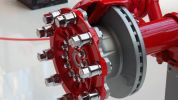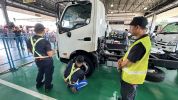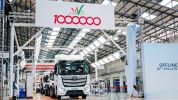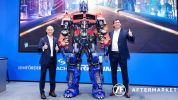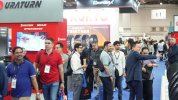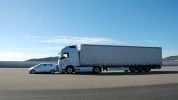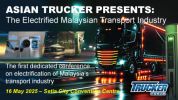Looking Back at 10 Years of Hengst Asia Pacific
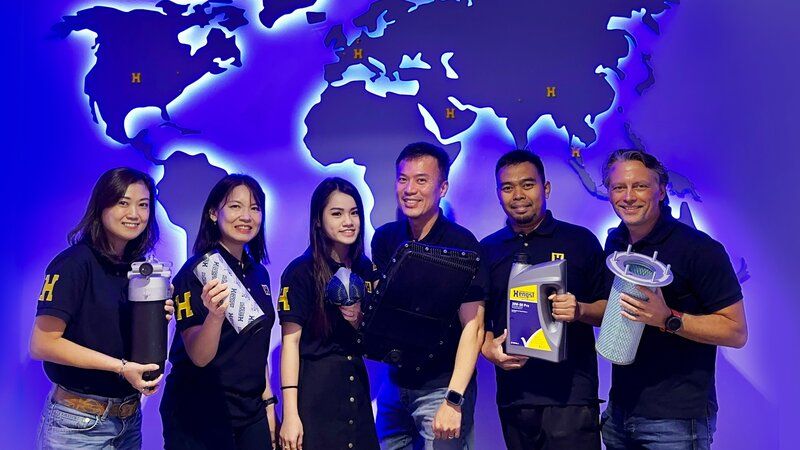
We look at what made Hengst Asian Pacific a success and how the business has grown over the past decade, developing from a one man show to having branched out into other countries.
The 10th anniversary of Hengst Asia Pacific is celebrated this year. Not only during this year’s Malaysia Commercial Vehicle Expo, but also in other events around the region as the brand enters their second decade with a local presence. What started as a strategic consideration with just one headcount has since grown into a force to be reckoned with, now having a footprint in India and Indonesia as well. We revisit their office in Singapore to have a look at this important milestone, talking to Mr Frank Maergner, Sales Director, Hengst Asia Pacific Pte Ltd, who has been responsible for the subsidiary since its inception.
This has proven that we need to be close to the customers and the market.
Revisiting the situation in 2014, the decision to anchor Hengst’s business in Asia stemmed from a patchiness in the sales patterns. To address the issue of unpredictability and fluctuation in business, Hengst initially relied on agents and representatives. However, growth had not been as expected and thus, the decision was made to establish an own entity to be present in the market and to provide first hand support from the brand. “We have also tried to grow through exclusive arrangements, however, the distance to the customers was still stifling the developments,” Maergner says. The plan was hatched to set up an office without any production attached as a pilot project to see if such a supporting structure would work. And work it did. Within the first two years, Hengst’s business in the region already doubled; after that, the business kept on growing beyond expectation. Today, the Hengst office in Dubai is modelled after the successful implementation of the Singapore office.
“This has proven that we need to be close to the customers and the market.” Having lived in Singapore and Australia before, handling import and export matters, Maergner was identified as the ideal candidate to set up and operate the local entity as the business model called for distribution of goods without a local warehouse to keep stock. Another crucial aspect that Hengst identified is that customers in Southeast Asia value long-term relationships with suppliers. Thus, having a local presence, with someone staying permanently, gave Hengst an edge as some of the Hengst customers already knew Maergner. This, as Maergner points out, is something that forms the fabric of the family-run business: throughout the organization, the key decision makers have not changed in a decade. Thus, clients can easily predict that way Hengst would act as a professional company. “This offers a consistency, that many others cannot offer. When Managing Directors of local offices rotate, the way the company behaves changes.”
Now in charge of 12 countries, the Singapore office is strategically located. The decision to open the regional office in Singapore was based on the fact that the country is corruption-free, offers easy ways of opening businesses and accounts while providing fast access to the surrounding countries. Hengst’s clients also like to visit the island state because of the ease of doing business. According to Maergner, the higher cost of locating the regional office in Singapore is offset by these advantages. Considering the competition between Hong Kong and Singapore, Hong Kong was not chosen as the location for the regional office as Hengst already had an established office with production in China and having two offices in one country, although a huge one, would not have made sense in the context of the expansion plans laid-out.
Those who followed the development of Hengst in the region will have noticed that there has been a shift in how the business operates. Initially, Maergner was a one-man band, which had to advertise the presence of the brand while immediately also ensuring that sales grew. “To sustain our growth, we also needed to identify suitable partners and staff to hire,” he reflected. At first, his daily life was very much a matter of door-to-door sales. Again, Maergner emphasised that the market needed to know that the brand is set for long-term, not just a fly by night idea. Over time, the team grew and with that, the structure needed to be adjusted. Being close to the local market also meant that Hengst had to adapt the product portfolio. Through a product manager that was hired, the offering throughout the region was tweaked to meet the needs of the local markets.
Today, there are specific products Hengst is selling here, that are not available in other markets. An Asia-specific product catalogue marked another important milestone. Today, there are seven headcounts and Maergner expects that further hiring will be required to deal with the newly added products from the acquisition of Bosch-Rexroth Hydraulic Filtration segment. “Today, my role is much more strategic, identifying long-term opportunities.” As an example of the synergies achieved is the creation of the Hengst-branded lubricants, which originated from Singapore as an idea. This example goes to show that there are tangible benefits in having localised operations, which can deviate from the standard product range to some extent.
This was an eye-opener as we learned that we can achieve more if non-competing brands come together to push an agenda that affects the entire industry.
A lot has happened with Hengst Asia Pacific in the past 10 years and reflecting on this, Maergner points out several highlights that have occurred during this period. Being able to leave a mark at a large-scale event, an event hosted in Myanmar in 2018 and the Malaysia Commercial Vehicle Expo during which Hengst was present with an own booth were memorable events that have made an impact on the business and Maergner himself. As an event addressing local needs, the mini expo in Myanmar had an impact as it allowed the brand to better understand the needs of the clients there. Another ground-breaking event that has left an impression was the “Spot the Fake” event, held in Malaysia in May 2023 as it was the first time Hengst partnered with other brands to co-host an important session that added value to customers and business partners alike. “This was an eye-opener as we learned that we could achieve more if non-competing brands come together to push an agenda that affects the entire industry.” Not surprisingly, the Pandemic marks a period of time Hengst Asia Pacific calls their most difficult. Such a situation being unique and never anticipated, the course of action to be charted was not pre-defined. By his own admission, the uncertainty resulted in reactions that may not have been fully thought through. “Maybe we were too quick to respond to the effects of the lockdowns. Perhaps we should have analysed things a little bit longer before we introduced measures.”
Now established in the region, Hengst Asia Pacific’s strategic direction may differ vastly from that of other brands in the region. In Maergner’s view, there is no market that is not attractive. In his words, it may even be a better value proposition to be active where others are not as a concentration of competing brands makes it harder to sell one’s own products. “We also made a promise of long-term support to our partners. Therefore, we are still active in Myanmar, visiting clients there and offering help where we can to our partners in the country.” Having seen the plan pan out, Maergner admits that he and his team could have been even more aggressive. Would he start over again, he would hire more people sooner and implement key projects earlier, however given the risk assessment paradigm at the time, Maergner and his team are confident to say that they have done the best they could, given the circumstances.
Until today, Hengst does not maintain a warehouse in the region. Having assessed the situation and working closely with the local distributors and dealers, it was found that there really is no need to stock parts locally. Dealers would plan ahead and order in bulk; these are orders that can be fulfilled by shipping just the quantities ordered without having to have a costly step of storing them in between. In Maergner’s view, there is no value-add in having a local warehouse as the nature of their client’s business does not support having one. However, when it comes to hydraulic components from the former Bosch-Rexroth business, then there might be a need to keep key components close by. When a hydraulic pipe bursts, it needs to be replaced right there and then. Meanwhile, the replacement of filters is a scheduled service whereby the parts can be obtained from a local dealer without any rush.
After the foray into Southeast Asia via Singapore, Hengst has now set up a subsidiary in Indonesia. Being the largest market in the region, it is to report to Singapore while servicing companies Indonesia, supporting them with import services as even large companies in Indonesia may not have the required licenses. Indonesia was chosen as it is a large country with matured industries.
Looking ahead, Hengst is changing its product line in accordance with the current needs. With electrification, a shift towards other product ranges takes place. However, with an expertise in high efficiency filtration, management is confident that the positioning as f iltration expert is the right one.
“As we are seeing now, electrification in Europe is also under scrutiny and what we can expect is that it will take a longer time to really take a hold here in Asia.” Meanwhile, Maergner points out that there is still a growing need for filtration products and education around it in the region. Hengst Asia Pacific is now getting more active with local association and organisations in order to offer users help in understanding how to best choose their filters. The use of substandard filters may cause long-term damage, something that most operators are not aware of and have never looking into. With own foundry and metal workshops, a visit to a Hengst production is typically an eye-opening event where visitors then fully comprehend the significance of using high-tech, high-end filters to improve their business.
Continuing on the trajectory of growth, Hengst opened a production facility in India on 14th May 2024. “Being close to the market allows us to serve the specific needs of our customers. What is important to point out is that the quality is always the same, it is always top-notch. We produce locally as typically, only the labour component makes a difference in the pricing. However, most of what goes into a filter is material and machinery and is controlled by the global quality control, based in Hengst’s Germany headquarters.”
Commemorating the anniversary, Hengst Asia Pacific will be participating in the most number of events ever this year, getting closer to the market, nurturing relationships and being there for customers.
